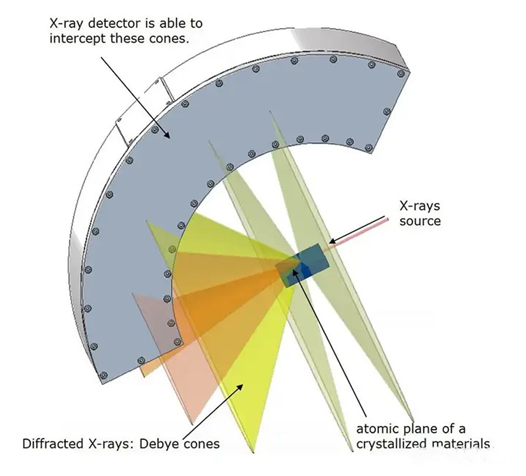
XRD
2024-06-03 10:00X-ray diffraction is a fundamental technique for investigating the solid structure, providing unique spectral information on the chemical composition and structural arrangement of samples. According to Bragg's law, the angle between an individual X-ray emitted by an X-ray tube and its diffracted beam, as well as the intensity of the diffracted beam, are measured to obtain relevant data.
Diffraction is an optical phenomenon in which a light beam spreads as it encounters the edge of a material or passes through an aperture. At the atomic level, diffraction occurs when electrons orbiting the nucleus coherently scatter light based on their number. In crystalline and polycrystalline materials, periodic arrangement of atoms leads to interference with short-wavelength light, resulting in diffraction patterns.

In powder X-ray diffractometer, the Bragg-Brentano geometry is one of the most commonly used setups, which relies on multiple moving components to detect the secondary scattered X-ray generated by the sample in order to obtain a complete diffraction pattern. Following Bragg's law, when the primary X-ray beam interacts with the sample, it diffracts and generates a secondary beam that can be detected by the detector. This results in a diffraction pattern displaying the characteristic crystallographic structure of the sample.

